-
张首晟:要用科学家的思维做投资
专家简介张首晟,CCG学术委员会专家,著名物理学家、斯坦福大学终身教授。 很多人应该还记得美剧《生活大爆炸》里谢耳朵代课的那一幕,他高冷的问台下的同学:“谁知道什么是拓扑绝缘体?”因为在谢耳朵看来,拓扑绝缘体是理论物理学最精深的课题之一。而这一理论的提出者,正是华裔科学家张首晟。 就在前不久,第一财经主持人王蕴媞就专访了张首晟教授,在量子计算、人工智能和自动驾驶等方面进行了探讨。作为科学家,你可以跟大自然对话 虽然在VC投资上也做得风生水起,但直到现在,张首晟最看重的,还是他作为科学家的这一面。“作为科学家,你可以跟大自然对话,冲在最前面,第一个去发现一些前沿科技,比如量子效应。”张首晟这样解释作为科学家的乐趣。2007年,他所发现的“量子自旋霍尔效应”被《科学》杂志评为当年的“全球十大重要科学突破”之一。而基于他对拓扑绝缘体和量子自旋霍尔效应的开创性研究,张首晟包揽了物理界几乎所有重量级奖项,包括欧洲物理奖、美国物理学会巴克莱奖、国际理论物理学中心狄拉克奖等,他也成为了诺贝尔物理学奖的“种子选手”。同时,张首晟还有一个身份是风险投资人,他的投资公司在创立的半年之后,就将资金规模从两千万美元扩展到近一亿美元,迅速成为了硅谷成长最快的风投公司之一。量子的世界是完美的 在谈到量子科学时,张首晟用到最多的一个词是“完美”。为什么呢?因为量子世界有一个非常奇妙的现象:一个基本粒子,它要通过两个孔,在孔的背后形成一个干扰的条纹,一个经典的粒子要么从左边穿过,要么从右边穿过,但是量子的粒子同时穿过两个孔,便是非常神奇的一个量子的世界。这就说明量子世界有一种平行性,如果用这种量子的平行性来做一个计算,一旦形成那个量子计算机的话,它等于用了量子的平行性,一下穷举了所有的可能性,所以这是一个非常值得我们追求的,完美的量子的世界。 本来量子计算机碰到的最大的问题就是量子的比特容易受到周围环境的影响,而张首晟和他的科研伙伴提出一个完全新的设想,把一个量子比特看作是一个最小的单位,把它拆成两半,远远的放在远处,周围的环境相互影响,不可能同时朝一个方向影响,所以不可能把这个量子比特摧毁。一般大家认为量子计算机可能是今后50年才能产生,但是张首晟认为,按照他们的新思路,也许能够提前把量子计算推到应用场景。“拓扑绝缘体”:有望彻底解决续航能力 在张首晟看来,“拓扑绝缘体”的提出可以让整个信息社会继续按照“摩尔定律”的规律往前推进。 一般来说,电子在芯片层次,它的运用是杂乱无章的,电子和电子之间有相互作用,电子和周围的杂质有相互作用,在碰撞过程中使得本来的电变成了无用的热能,这样继续下去的话,散发出来的热能也是翻一次倍。而张首晟的科学研究发现了一个非常神奇的量子现象,使得电子在芯片层次能够有自选轨道和达成的各分其道,互不干扰的高速公路运转,使得电子能够在芯片层次几乎没有能耗的在运动。按照这个思路继续下去,未来手机形态将会彻底改变,续航问题将会被解决。而谈到对于未来的期许时,张首晟认为,拓扑绝缘体这个材料将会在未来走出实验室,真正实现工业化。人工智能:未来需要彻底理解智能的理论基础 对于人工智能的发展,在采访中张首晟做了一个比喻:“比如说人类看到鸟飞的时候,就觉得非常的神奇,我们也想学鸟飞,一开始想飞的办法就是模仿,也是一种仿生学,就是我们在手臂上绑两个翅膀,想着自己能飞起来,这是一个简单的仿生。”但是当我们真正理解了飞行的科学原理,就是物理学的一个最根本的流体力学,一旦有了流体力学的理论基础的理解,我们便可以设计出来飞机,它是飞得远远比鸟好,但它并不一定像鸟,所以这个飞机的出现的真正原因,在于我们对理论基础的理解,从而推动了它的发展,并不是简单的仿生。 在这个意义下,他觉得人工智能现在还处在一个比较简单的仿生的阶段,还是用一个神经元简单地在模仿一个大脑。而他认为人工智能下一步的发展,就像从看到鸟飞变成飞机。“在理论的基础上,未来我们会彻底理解智能的理论基础是什么,一旦理解之后,我们就能够做出一些非常神奇的新的技术。”张首晟这样阐述对于人工智能未来的展望。无人驾驶:技术路线一定要有可扩展性 对于在无人驾驶领域的先行者谷歌,张首晟并不赞同谷歌的技术路线。 因为他认为按照谷歌的这个思路,发展自动驾驶需要一个高清的三维地图,一个激光雷达。但其实完全没有必要的,支持这个观点的依据是人类驾驶的原理,人开车的时候不需要高性的三维地图,人的脑子上也不会发出激光雷达。所以作为投资人,张首晟投资了一家做自动驾驶的公司,是一个普林斯顿大学教授的研发团队,用一个普通的设备装在车上,不需要激光雷达和三维地图就可以实现无人驾驶。张首晟认为,发展无人驾驶的技术路线一定要有可扩展性,因为激光雷达和高清三维地图都是不可扩展的,人不需要这些就可以实现驾驶,所以原则上计算机视觉达到一定程度以后,就可以实现真正的无人驾驶。文章选自搜狐网,2017年7月12日
2017年7月14日 -
吴江:以人才先手棋盘活京津冀整盘棋
专家简介吴江,全球化智库(CCG)学术委员会专家,中国人事科学研究院原院长。 日前,由北京、天津和河北三地人才工作领导小组联合编制的《京津冀人才一体化发展规划(2017-2030年)》正式出台。这是我国人才发展史上第一个跨区域合作的人才发展规划。《规划》的出台有哪些深远意义?《规划》有哪些亮点?记者就此采访了《规划》编制起草组负责人、中国人事科学研究院原院长吴江研究员。 记者:在中央出台了京津冀协同发展规划纲要之后,为什么要制定人才一体化发展规划? 吴江:人才一体化发展是实现京津冀协同发展的智力支撑和组织保障。具体来说,疏解非首都功能,人才是重要的疏解要素,需要根据京津冀三地的发展功能布局来调整优化人才结构,引导人才合理流动;实现三地的互利共赢,首先要实现人才的互利共赢,解决人才资源配置中的“断头路”问题;打造京津冀区域竞争力,需要克服固守“一亩三分地”的思维模式,走出一条聚天下英才而用之的更加开放的新路子;构建区域人才统一大市场,也需要在区域范围内联合推动体制机制改革,在京津冀率先形成一个科学、规范、高效的人才治理体系。 制定《京津冀人才一体化发展规划(2017-2030年)》,就是顶层设计、整体谋划、长远着力,提升三地人才整体竞争力,在更大空间、更高层次、更广领域利用和共享国内国际两种人才资源,推进人才发展体制机制改革和政策联合创新,以人才一体化发展的“先手棋”盘活京津冀协同发展的“整盘棋”。 记者:京津冀三省市人才工作发展落差较大,《规划》编制中如何找到“世界高端人才聚集区”这一共同发展目标? 吴江:《规划》编制中面对的重要挑战,就是如何在差异化中寻求三地共同的改革方向,把人才工作融合到京津冀协同发展中去。 确立“世界高端人才聚集区”目标的基本依据,就是京津冀协同发展纲要中“以首都为核心的世界级城市群建设”战略目标。这也是习总书记提出的“聚天下英才而用之”在京津冀应该成为试验区的意义所在。同时,这又是当前京津冀三地经济社会发展的战略需要。在调研中,我们发现三地以创新驱动发展为引领,普遍渴求“高精尖缺”人才,以解决人才结构性的战略转移。这样我们就找到了京津冀三地的共同点。“世界高端人才聚集区”这一目标的提出,赋予三地人才工作一个全新的定位。不排除三地常规工作各做各的,但是围绕着这个目标,必须跳出“一亩三分地”的思维,形成一体化的创新链、产业链、人才链,谁离开谁都不行。 记者:“一体、三极、六区、多城”,人才一体化发展的总体布局是如何确立的?其内涵是什么? 吴江:根据京津冀区域整体定位和三省市各自在京津冀协同发展战略中的功能定位,《规划》提出了一体、三极、六区、多城的总体布局。“一体”就是联合打造集事业(创新)平台、公共服务、人才政策、人才市场于一体的区域人才一体化发展共同体。“三极”是指三省市重点发展的方向要各展所长,即北京形成原始创新人才发展极,天津形成京津冀高端制造业人才发展极,河北形成京津冀创新转化人才发展极。“六区”是根据京津冀协同发展战略确立的空间布局和功能承载平台,结合区位特色,打造六个人才一体化发展示范区,即东部滨海产业人才发展示范区,西北部生态环保人才发展示范区,中部临空经济高端人才发展示范区,雄安新区高端创新创业人才发展示范区,南部科技成果转移转化人才发展示范区,通武廊京津冀人才一体化发展综合示范区。“多城”即以京津“双城”联动带动多城联动,打造区域特色产业人才发展带。 这一总体布局与京津冀协同发展纲要提出的“一核、双城、三轴、四区、多节点”空间格局遥相呼应。其中,我们根据中央部署的调整,在原有四个功能区中增加了通州副中心和雄安,形成了六个示范区的架构。也就是说,你京津冀规划的重点在哪,我就改革在哪,人才工作就率先支撑在哪、优先发展在哪,体现了人才工作和京津冀协同发展规划的高度融合,避免了人才和经济社会发展“两张皮”。 记者:为实现京津冀人才一体化发展目标,《规划》推出了哪些举措?有什么特点? 吴江:针对京津冀人才发展在人才结构、国际化水平、体制机制、公共服务等方面存在的突出问题,《规划》明确了构建区域人才发展新格局、抢占世界高端人才发展制高点等5项重点任务,和全球高端人才延揽计划、京津冀人才创新创业支持工程、“圆梦京津冀”菁英计划等13项重点工程,有些工程今年就启动实施。 在设计中,我们一方面着力突出优势互补。每项任务和工程都不是平均用力,既考虑到各自特点,又能够通力协作。比如,全球高端人才延揽计划,北京延揽的高端人才,不仅是北京的资源,京津冀都能共享。另一方面,重点在“落地”上下功夫,把人才工程与三地当前的重点部署、重大项目结合起来。比如冬奥人才发展工程、沿海临港产业人才集聚工程、临空经济产业人才集聚工程,都是紧紧围绕三地现有的重大建设项目开展的,目的就是让重大项目成为集聚人才的平台。 记者:雄安新区是京津冀协同发展的重要一步棋。《规划》中如何发挥新区在人才一体化发展中的特殊作用? 吴江:雄安这篇大文章是中央在部署,《规划》主要依据中央对雄安的整体部署而设计,主要是原汁原味吃透中央精神,吃透习总书记讲话精神,围绕发挥人才引领示范作用,落实雄安新区的定位,包括在六个功能区中赋予雄安新区“高端创新创业人才发展示范区”使命;支持新区争取国家各类优质创新资源,打造区域人才一体化深度融合区;实施雄安新区人才集聚工程,助力雄安新区开放发展先行区建设。《规划》要做的,就是在雄安新区建设中全力以赴做好人才支撑。雄安新区发展到什么地步,京津冀人才一体化发展就全力支持到什么地步,重点是要打造好新的政策环境和事业平台。 记者:作为一个中长期发展规划,怎样避免《规划》在落实中“虎头蛇尾”? 吴江:我们在《规划》中推出了一个监测体系,对《规划》实施进行监测、评估、考核。同时,研究制定绩效评估的关键指标,建立第三方的规划评估机制,委托专业机构对规划实施进行评估,并将评估结果作为人才工作部门绩效考核的依据。一旦出现实施不力的情况,将由京津冀部际协调小组对责任单位问责。 人才工作是一个长期战略,京津冀人才一体化也是个十年磨一剑的工程,需要大家下一些慢功夫,多做基础性的工作,少做轰轰烈烈的炒作。“十三五”是打基础的时候,真正有大的突破,应该是在2020年之后,或者2020年到2030年。 在京津冀人才一体化发展过程中,我们必须时刻牢记两个规律:一个是市场配置资源,一个是人才成长规律。按规律办事,就不能把京津冀人才一体化发展这项工作做成帽子工程,不能急功近利瞄着一亩三分地。那就是放弃了长远目标,放弃了大智慧。文章选自《中国组织人事报》,2017年7月11日
2017年7月13日 -
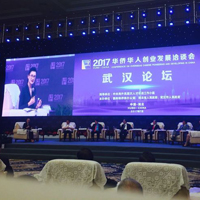
【荆楚网】配置全球人才资源的学校
“作为一名广东人,是什么让你选择留在湖北发展?”“报国无地域,科学无国界。”“引进高精尖人才,靠什么?”“士为知己者所用。” 昨日,东湖之滨,华创会武汉论坛上,央视著名主持人董倩围绕“引智”话题连连发问,与会嘉宾妙语连珠、精彩作答。这是一片值得付出的热土 “华创会是湖北武汉重要的招才引智平台,引进高精尖人才,靠什么?”董倩向嘉宾求教。“士为知己者所用,湖北武汉懂行的人很多。”著名纳米专家、华工正源光子技术有限公司首席科学家王肇中坦言,回国之初,上海、浙江等地也有意引进。经过深入考察比较,最后选择了光谷。这里有志同道合的研发团队、有完整的产业链条,还有政府等各方面的支持,事实证明,武汉来对了。“远见和诚心,是吸引高端人才的必备条件。”欧洲人文和自然科学院院士、国际著名华人食品科学家孙大文再次参会,俨然成了“主人”。去年华创会上,他受聘为省政府咨询委员会华侨华人咨询委员,并率领国侨办海外专家咨询委员会考察团来湖北交流。 虽然家乡在广东,孙大文却对湖北情有独钟。他说:“这是一片值得付出的热土,如果找到合适的项目契合点,很可能将食品无损检测技术在湖北落地。”引进全球人才为我所用 华创会起步早,基础好,17年来吸引了2万余名海外高层次创新创业人才回国服务。环顾周边省份,激烈的“人才之战”已经打响。对于华创会的发展方向,董倩请各位专家支招。“华创会的站位可以更高一些,不仅是吸引华侨华人归国,更应该是引进全球人才为我所用,打造一所配置全球人才的学校。”中国人事科学研究院原院长吴江的观点,赢得现场专家一致认可。 “湖北是科教大省,武汉拥有丰富的高校资源,应该发挥优势,吸引全世界的大学生生源。”全球化智库(CCG)理事长兼主任王辉耀建议,湖北在出台“我选湖北”百万大学生留汉创业就业工程的同时,可以启动10万“一带一路”留学生来汉计划,培育一批批未来的“中国通”“武汉通”。 对此,马来西亚青年领袖黄颖新十分认同,“大学时代,是成长的关键期。在一个城市读大学,对这个城市会有特殊的情感,服务当地的可能性也很大。”逐步在世界各地开分会场 今年华创会,相对往年表现出“三多”特点:报名人数多、项目征集多、高端嘉宾多。成绩得益于会议前期,省政府在美国、日本、加拿大等国举办的6场推介活动。“一次推介,就会吸引一批粉丝。要提升华创会国际影响力,不仅要‘请进来’,更需要加快步伐‘走出去’。”王辉耀建议,华创会要逐步在世界各地开分会场,使其成为全球华侨华人创业发展的盛会。 中国人民大学国际关系学院副院长金灿荣提出一个切实可行的建议:“下次,参加华创会的嘉宾,要带一名外国人才来,让他们实地感受湖北发展的强大气场,感受‘武汉,每天不一样’的发展速度,吸引更多外国人了解湖北、留在湖北、贡献湖北。” “出台配套人才政策时,可从5个方面发力:差异化、精准化、层次化、本土化、柔性化,让人才能够引进来、留下来。”孙大文建议。 王辉耀补充:“层次化,不仅包括年轻人才,也应该包括掌握高精尖技术的‘银发’专家,他们有情怀,有时间、有人脉为国奉献。建议湖北启动‘银发计划’,吸引他们前来!”文章选自荆楚网,2017年7月9日
2017年7月12日 -
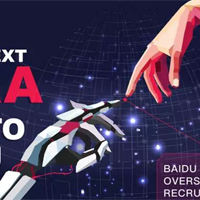
[Independent Journal Review] Highly Skilled Immigrants Are Starting to Choose China Over US
In March, the Chinese search engine company Baidu set out on its first overseas college recruitment tour, which included visits to some of California’s top-tier tech schools like UC Berkeley, Stanford, and USC.But the tech giant wasn’t looking for students to join its research facility in Silicon Valley.Baidu sought to find tech-savvy students willing to decamp to Beijing to work at its headquarters, for both full-time roles and internships, according to a press release announcing the recruitment effort.While American students can intern in China, Baidu’s permanent salaried positions in Beijing were mostly aimed at Chinese citizens in the United States. Much like the rest of the world, it’s easier for Chinese companies to hire Chinese citizens rather than trying to sponsor a foreigner’s employment.It’s not just Baidu trying to repatriate Chinese talent working or studying abroad. Fewer highly skilled immigrants are choosing to work or study in the United States. And China, sensing the opening, is increasingly turning to economic incentives to lure back home their expats pursuing educations elsewhere.Chinese-born students account for 31 percent of international students enrolled at American universities, making China the top supplier of foreigners in the American educational system.But changes are afoot. There’s been a steep decline in the percentage of Chinese-born students applying to American universities, according to an American Association of Collegiate Registrars and Admissions Officers survey of 250 higher learning institutions in the United States.In the last year alone, Chinese applications to undergraduate programs dropped by 25 percent. It was an even bigger drop of 32 percent to graduate programs.Dr. Wang Huiyao, the president of the Center for China and Globalization(CCG), suggested that recent shifts in immigration rhetoric in the United States may be one of the reasons why fewer Chinese students are staying in the United States for professional opportunities after they complete their studies:"I think what Donald Trump does has a big psychological impact. A lot of students plan to go and then not go. A lot of students planning to stay will not stay to find a job. So that, I think, is damaging the core competence of the United States.The United States for the last hundred years has really, that difference, is that they’ve gathered the talents of the world. ... That’s what makes America, really, number one. China’s really lacking the national talent."And so it is that China is taking advantage of the shift by trying to sweeten the deal for Chinese citizens abroad to join its workforce.For example, in Shanghai, the municipal government offers Chinese students abroad a fast track for highly sought-after “hukou,” essentially a household residential registration for social, medical, and educational services, in exchange for working in the city, according to Jie Zong, a policy analyst at the Migration Policy Institute.“Until recently, there hasn’t been a very deliberate strategy for immigration," Zong told IJR. "Quite recently, [the government has] loosened certain requirements in terms of immigration in China.”Part of what seems to be triggering anxiety over immigrating to the United States is that since Donald Trump was elected, the ability to obtain work visas has been uncertain.April’s “Buy American, Hire American” executive order specified that agencies will evaluate the current disbursement of H1-B visas, which are intended for highly skilled workers and academics trying to enter the United States. Before Trump signed the order, the number of H1-B applications dropped in contrast to the previous year, a decrease some attributed to Trump’s campaign trail rhetoric to reform the program. Soon after the order, immigration services also suspended premium processing for H1-B visa applicants, meaning companies could no longer shell out extra bucks to put their applicants at the head of the line.Last year, Trump called the H1-B visa “very, very bad” for American workers.But with the president this week, during a listening session with technology CEOs, White House Press Secretary Sean Spicer signaled Trump could change his mind:“I think the president is going into this meeting to listen [...] But I think there’s also a worker component to this. We’ve talked a lot about visa reform in the past, and I think the president wants to make sure that he listens to the various people who have interest in this subject.”It’s not just China that’s reacting and adapting to recent immigration uncertainties.About 70 percent of H1-B visas issued each year go to Indian immigrants working in the tech sector, and following the executive order, Indian tech shares “took a steep fall.”From Independent Journal Review,June 2017
2017年7月12日 -
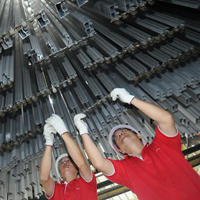
[Global Times]Good start for China-US 100-day trade plan
More cooperation expected to drive bilateral economic ties: expertsWorkers at an aluminum factory in Baise, South China’s Guangxi Zhuang Autonomous Region Photo: CFPThe China-US 100-day action plan that was initiated after the two presidents’ meeting at Mar-a-Largo in April has achieved new progress, and the two sides are discussing a one-year cooperation plan, President Xi Jinping said on Saturday on the sidelines of the G20 summit held in Hamburg, Germany, when he met US President Donald Trump, the Xinhua News Agency reported. Experts said on Sunday that the 100-day action plan has so far made a sound start and the two countries are expected to further open up sectors like finance, services and high tech in the future to boost bilateral economic and trade ties.A total of 10 initial results were released under the plan on May 12 in sectors such as agricultural products, energy, banking and financial services. For instance, as part of the plan, the US has pledged to issue regulations on the export of China-made chicken and poultry by July 16, and in turn China has agreed to lift a 14-year ban on beef imports from the US by the same deadline.On June 27, the US accepted imports of cooked poultry from China. The General Administration of Quality Supervision, Inspection and Quarantine announced on June 20 that beef imports from the US were permitted in China. On June 27, US retail giant Wal-Mart’s membership store Sam’s Club in Shijingshan district Beijing, started selling beef imported from the US. The initial results in improving trade ties have formed a basis for sound cooperation between China and the US, and the two countries are actively putting the initial plans into action, Gao Feng, spokesman of China’s Ministry of Commerce(MOFCOM), told a press conference on Thursday."With the aim to further advance bilateral economic cooperation, China and the US are conducting intensive consultations about follow-up results under the plan, and new achievements are expected," Gao said."The 100-day action plan has so far made a good start. The 10 initial results are based on mutually opening-up markets, aiming to address trade imbalances between China and the US," Xu Hongcai, deputy chief economist at the China Center for International Economic Exchange, told the Global Times on Sunday.China’s trade surplus with the US was 640.5 billion yuan ($94 billion) in the first five months, up 12.2 percent year-on-year, according to data released by China’s customs bureau on June 8."The 100-day plan not only targeted some results, but more importantly, focused on Chinese and US attitudes and accomplishments for tackling bilateral trade issues," said He Weiwen, Vice President and senior fellow at Center for China and Globalization (CCG), an executive council member at the China Society for the WTO. "The key lies in whether cooperation in [bilateral trade] will continue," He told the Global Times on Sunday.Experts also showed concern that the plan may face obstacles as the US continues to launch trade remedy investigations into Chinese exports.In the first half of this year, the US launched 11 trade remedy probes into China-made products, accounting for about 30 percent of the total investigations that China faced from the world, data released by the MOFCOM showed.In April, the US Commerce Department launched an investigation into aluminum imports from China under the rarely used section 232 of the Trade Expansion Act of 1962 that allows restrictions on imports for reasons of national security, media reports said.Trade friction between China and the US is unavoidable, so while it would not be a major obstacle to the success of the 100-day action plan, it will hinder trade ties moving forward, according to experts. He said that it is normal to see the US launch trade remedy probes against China. But what matters is whether the final ruling complies with WTO rules or is based on US abuse of the trade remedy measures, He noted."Trade friction would harm the smooth advance of the China-US 100-day action plan," he said.In a bid to promote bilateral trade and the economic relationship, the two countries are expected to open up more industries such as finance, services and high tech in the coming years, Xu said."More high-tech products imported from the US could advance the reforms of Chinese companies and help them improve competitiveness," the expert added.From Global Times,2017-7-9
2017年7月12日 -
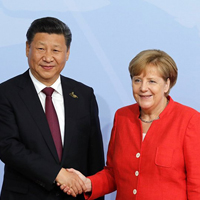
[SPUTNIK] China, Germany to Harmonize Positions at G20
China and Germany, countries which are called beneficiaries of globalization by experts, could find common ground at the upcoming G20 Summit in Hamburg.China and Germany, both main beneficiaries of globalization, are likely to find common ground at the upcoming G20 Summit in Hamburg despite massive anti-globalization protesters flooding the streets of the German port city, experts told Sputnik on Friday.BALANCED GROWTHDemonstrators fighting for a wide range of causes occupied the streets of Hamburg in recent days, in anticipation of the annual gathering of leaders from 20 major economies of the world, taking place on July 7-8.Activists called on local residents to take part in a demonstration dubbed "Welcome to Hell," organized by an anti-capitalist group and aiming to express protest and resistance against leaders of capitalist regimes all over the world.Another group launched a protest with an artistic touch, titled "1000 Gestalten," where 1,000 zombie-like creatures covered in crusty clay flocked through the streets of Hamburg on Wednesday. The demonstration, in the form of an art performance, was a symbol for a solitary and open-minded civil society, organizers said.Local law enforcement officials said about 20,000 police officers would be deployed during the G20 meeting to ensure security in the city.Unlike the last time when the summit took place in the city of Hangzhou in eastern China, where local authorities made sure no sign of opposition would occur, Hamburg is expected to offer a completely different environment for world leaders.Despite foreseeable chaotic scenes in the streets and vocal opposition from different groups, China, which chaired the summit last year, is expected to find a lot of common ground with the host Germany, as both nations are main beneficiaries of globalization thanks to their strongholds in the global manufacturing chain, experts told Sputnik."Both China and Germany have strong manufacturing industries and benefited greatly through the globalized economy. They should have a lot of common language in promoting the continuation of globalization," Wang Huiyao, the president of Center for China and Globalization (CCG)in Beijing, told Sputnik, adding that German Chancellor Angela Merkel may feel she has got a helping hand from Chinese President Xi Jinping after US President Donald Trump made things awkward during the G7 Summit in Italy earlier this year.Official figures showed Germany’s trade surplus reached a new record of $270 billion in 2016, while China’s trade surplus stayed strong at $511 billion last year, despite a 7.7 percent drop in exports from the previous year.However, the Beijing-based expert acknowledged that there was some negative impact from globalization, especially on specific industries in certain countries, and it is important for global leaders to address those issues while pushing forward the process of globalization."We do need to reflect on the negative impact of globalization and promote balanced growth globally to make sure the benefits reach ordinary people in different countries," he said.Trump has long accused China of stealing manufacturing jobs from the United States and promised to bring those jobs back to the country during last year’s presidential campaign.Merkel told German magazine Die Zeit earlier this week that, while Germany is looking at the possibilities of cooperation to benefit everyone, globalization is seen by the US administration more as a process that is not about a win-win situation but about winners and losers.As nations including China, Germany and the United States improve their economic structure through the globalization process, it is possible for certain kinds of manufacturing to return to advanced economies, Wang suggested."Chinese auto glass manufacturer Fuyao Glass decided to move its manufacturing to Ohio in the US to reduce cost, by bringing production closer to its customers in North America," he said.In October 2016, Chairman of Fuyao Glass Cho Tak Wong pledged to invest $500 million into an automotive glass plant in Ohio, which employs about 2000 workers.Wang also sees an opportunity for Chinese companies with rich experience in infrastructure construction to be involved in similar projects in the United States after Trump promised to "make America great again" by improving the country’s aging infrastructure.PAINFUL TRANSITIONAmericans voters in states such as Michigan, Ohio and Pennsylvania, where manufacturing used to dominate the local economy, broke away from their tradition to support the Democratic Party and voted for Trump during last year’s US presidential election.After taking office, Trump threatened to wage a trade war against China and Germany by introducing stiff tariffs as part of his efforts to push US companies to move manufacturing jobs back to the country.But economists said it would be impossible for Trump to succeed in bringing those jobs back to as it is against the rule of the market economy."There’s no way for Trump, even if he would use the most severe trade policies, to bring American manufacturing jobs back to an appreciable extent," Alan Deardorff, the professor of international economics and public policy at the University of Michigan, told Sputnik.US automaker Ford Motor said in late June that it plans to centralize production of the next generation of its iconic compact car, the New Ford Focus, in China, instead of Michigan or Mexico. Ford currently builds its Focus compact cars in Michigan, as well as in China and Europe.The US economist pointed out that technology improvements such as automation and robots was also a factor that led to a loss of manufacturing jobs in the United States, in addition to losing those jobs to countries like China.Traditional manufacturing hubs in the United States, such as Detroit in Michigan or Pittsburgh in Pennsylvania, need to go through a painful transitional period to upgrade local industrial structures to move away from manufacturing, Deardorff suggested."The Detroit area suffered tremendously because of the decline of the auto industry," he said, adding that local population dropped by more than half.The economic professor noted that Pittsburgh, which used to be the US center for steel production half a century ago, was a successful example of this kind of industrial transition."They (Pittsburgh) went through a terrible time, but they have come back, by shifting to healthcare and education. Major hospitals and universities helped the city thrive again," Deardorff said.NO ALTERNATIVEGermany police clashed with thousands of protesters taking part in the "Welcome to Hell" demonstration near the summit venue on Thursday. Local authorities said dozens of police officers were injured during violent clashes throughout the evening. Local police expected about 100,000 protesters to march in the streets of Hamburg during the 2-day summit.The organizers of the demonstration are a group of anti-capitalist activists who blame the capitalist economic model for global exploitation and impoverishment. The group claimed "the apparently unchallenged triumph of capitalism has left behind a trail of devastation."Ironically, one of the key participants of the G20 summit and a main beneficiary of globalized capitalist economy is China, which still labels itself as a Socialist country.Economists suggested that, despite flaws in the capitalist economic system, there is no viable alternative that has been proven to be successful."The alternative has been tried in the Soviet Union and in China before Deng Xiaoping. It didn’t really deliver the goods," Tony Makin, the professor of economics and director of the Griffith APEC Study Center at Griffith University in Australia, told Sputnik, adding that China is the best example where the leaders realized that a market economy delivers growth.The Australian economist believes that globalization should not be reversed, but instead, local authorities need to figure out ways to compensate those vocal minority losers in the globalized economy.From SPUTNIK,2017-7-7
2017年7月12日 -
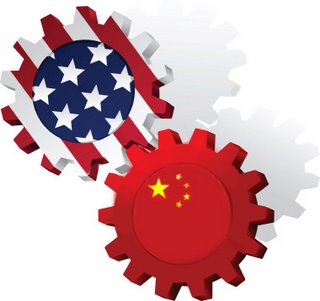
[Bloomberg News] With 100-Day Sweetener Talks
For China, the most important achievement of the 100 days of trade talks with the U.S. now coming to a close might be keeping its counterpart at the table.Negotiations due to end on July 16 have yielded some progress already, such as getting American beef back in Chinese stores, a small step toward addressing the $347 billion U.S. deficit on $578.6 billion in trade last year.But even amid continued engagement, major breakthroughs look less likely with President Xi Jinping complaining of a “negative” turn in relations just before his expected meeting with Donald Trump this week, and escalating tension over North Korea that the U.S. links to trade.For the world’s second-largest economy, the talks are a goodwill gesture to maintain friendly economic ties and avoid White House ire, said Wang Youxin, an analyst at Bank of China’s Institute of International Finance in Beijing. "We make some concessions, give them a sweetener," he said.The lifting of China’s 14-year ban on U.S. beef imports is one of the initial deals, dubbed "early harvests," that allow both sides to say they’re making progress. Related benefits include a surge in U.S. crude oil imports since April and an increase in the purchase of American liquid natural gas.In addition, China has approved two out of eight biotechnology product applications from the U.S., and the central bank said this week it will allow foreign-owned financial services firms to compile and issue credit ratings in the domestic bond market."The talks show China understands U.S. concerns -- we’re paying attention, we’re willing to cooperate, and we’re determined to produce deliverables," said Wei Jianguo, a former vice commerce minister and now vice chairman of the China Center for International Economic Exchanges, a Beijing-based think tank. The negotiation style fits Trump’s temperament and can help send positive messages, he said.Still, that dialog is being interrupted by the standoff between the U.S. and North Korea over the latter’s nuclear program. After Pyongyang’s testing of a intercontinental ballistic missile this week, Trump has linked his frustration over the regime to his willingness to compromise on trade with China.“Trade between China and North Korea grew almost 40% in the first quarter. So much for China working with us - but we had to give it a try!” Trump said Wednesday on Twitter.Ministry of Commerce data show trade with North Korea rose 13.7 percent in the first five months from a year earlier. Exports rose 32 percent while imports contracted 9.3 percent.‘Good Start’"Trump and China have had a good start, but now it’s hit a bump on the North Korea issue," said Wang Huiyao, director of Beijing-based think tank China Center For Globalization(CCG). "There are opportunities for China and the U.S. to sit down and talk to find a way out as the 100-day trade talks are still ongoing, Xi and Trump are set to meet at G-20, and Trump is going to visit China this year. China-U.S. trade is the basis of bilateral relations and none can afford a trade war. The world can’t either.""China’s economic relations with the U.S. are always not just about the economic issues, and there are always other interests involved. The recent North Korea provocations could possibly exert some negative impact, as Trump may get impatient and anxious and start to pressure China," Song Hong, a senior fellow at the Chinese Academy of Social Sciences, which advises the government on policy.Positive SignThe 100-day talks are making good progress, according to Zhu Guangyao, China’s vice finance minister. The two nations have contacts "every morning and every evening," Zhu said at a press conference at the G-20 meeting in Hamburg on Thursday. China has also studied Trump’s books on how to do deals, Zhu, who is also a lead negotiator in the trade talks, said.Some Chinese analysts share the view that what truly matters about the 100-day talks is keeping both sides together at the negotiation table and avoiding a trade war, according to Lu Zhengwei, chief economist at Industrial Bank Co. in Shanghai.Agriculture and energy are the trade domains most likely to show additional progress, according to Lester Ross, a partner in the Beijing office of U.S. law firm WilmerHale who also leads the policy committee of the American Chamber of Commerce in China.China’s commerce ministry said in a May report that it wants to increase U.S. agricultural imports such as soybeans and cotton, along with energy products including liquid natural gas, crude oil and refined oil, plus aircraft, integrated circuits and machine tools.Such gains are less impressive in a broader context of the world’s largest trading nation: China’s customs data show total beef imports stood at $2.5 billion in 2016, while crude purchases totaled $116.5 billion -- and machinery imports came in at $771.4 billion. Allowing foreign credit rating firms to compete in the domestic market was a long-awaited step that’s part of a broader reform plan to open up the financial system.Asymmetric AccessThe trade plan could erode some of China’s trade surplus with the U.S., and to a larger extent if the imports boost expands to more sectors, said Wang. But the bigger challenge in the negotiations will be to persuade China to further open service sectors including education, finance and health care, he said.Ross said American businesses are more worried about asymmetric market access, in which they’re blocked from operating or acquiring in large swathes of the economy while Chinese companies are mostly unencumbered in the U.S. Bigger Chinese commitments are needed to lower barriers for the U.S. firms, he said, calling the new foreign investment guidelines "limited progress" toward leveling the playing field."The 100-day trade plan could very well be a trap for the U.S.," said James McGregor, China chairman of business advisory firm Apco Worldwide Inc. and a former AmCham chairman. "After a few concessions on each side, then China may consider that things are back to business as usual with the various industrial and technology policies that are very threatening to the future of the U.S. businesses."In the lead-up to Xi meeting Trump on the sidelines of the G-20 summit in Hamburg, old disputes are resurfacing and cooling the warmth that followed their Florida summit. The U.S. has in recent days made a naval patrol past a Chinese-controlled islet, announced an arms sale to Taiwan, ranked China among major human-trafficking offenders, and called on Beijing to let ailing Noble Peace Prize winner Liu Xiaobo seek cancer treatment abroad.“Ties are also affected by some negative elements, and the Chinese side has already expressed our stance to the U.S.,” Xi told Trump, state television reported Monday.Those issues aside, economic relations are still a long way from the worst-case scenario. Trump, elected last year after more than two decades of criticizing China’s trade policy and a campaign full of promises to fight it, has eased off threats since meeting Xi at Mar-a-Lago."Reversals in Trump’s attitude are like a negotiation tactic, or bluff, to get a better deal," said Lu. China and the U.S. may "draw their swords," he said, but won’t really fight.From Bloomberg News,2017-7-6
2017年7月12日